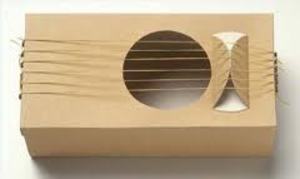Children, as a rule, love music. By the time they can sit up, you can enjoy watching them bounce up and down to music they like. Later, once they can stand and walk, they will often jump up and down to the beat of a song, later dancing and singing along with their favorite tunes. Music is a fundamentally engaging and satisfying experience for most children. The only way to possibly improve on that experience is to provide them with the experience of being able to make some themselves.
I am not talking about running out and buying a guitar, keyboard, simple lap harp or violin for your toddler or kindergartener. Rather, I have some ideas, admittedly born and bred through my own childhood experiences, that will give your child the opportunity to ‘make’ music by using, with your help and permission, some common household objects – some of which are actually usable as instruments just as they are, and others which require the deliberate and wondrous manipulations of an adult to turn them from their common function into a device that can be played and enjoyed by a youngster.
In the first instance, obvious examples abound in just about every household. Percussion comes to mind first. Yes, you can buy your child a small drum, shaking jingle bells and rhythm sticks – but, if you are so inclined, you can make two or three old pots available to them with a wooden spoon. Presto! A set of drums. Blocks or wood or boxes of different sizes make wonderful kid-level bongos and a variety of different sounding ‘drums’ played, as most kids will enjoy, bare handedly. A comb covered with a simple facial tissue makes a great kazoo noise when you blow through it and, of course, there is nothing quite like the melodious sounds of a spoon on a line of sequentially sized plastic cups or glasses. The choices are limited only by your own imagination.
Because there is really no right or wrong way to play pots and pans, cups, glasses of boxes, kids can enjoy them with an openness uncontaminated with the anxiety so many of them seem to have about doing something wrong. This would be especially true in a household where one or another of the adults actually plays a ‘real’ instrument.
Then there is the second type of homemade musical instrument. These are the ones that require some modification to be musically enjoyable. One example if this would be the decades old practice of stretching a few rubber bands of varying thicknesses and tensions over an open box. We used to use pressed wooden cigar boxes, but as they have become harder to find, any form small box will do. Each rubber band will yield a different sound. Presto! A fundamental strumming instrument requiring no ‘fretting’ (as it has no neck) thereby allowing the child to play and experiment with plucking strings that make different sounds.
Pieces of wood of various lengths can be fastened to short parallel boards (with either glue or nails) and struck with wooden spoons. In the world of manufactured musical instruments, this little device is called a Xylophone. Kids can be taught how to blow across the top of an empty bottle – a traditional “Jug” as in Jug Band Music, rub sticks on various surfaces to create a range of types of percussion sounds or even, when they are just a bit older, how to wet a finger and rub it around the inner ring of a glass creating a particularly melodious tone that varies according to the size and type of the glass and how much water is in it. This particular household musical creation, was developed in depth by the famous composer J.S. Bach and called the Glass Harmonica. He later created many pieces of music for it, but it began as a plaything for the children in his family.
Whatever you can imagine and tolerate is possible and the children will enjoy these household instruments as much or more than they will brightly colored, battery powered devices that do all the creative work for them when they simply push a button.
Give it a try – the response of your kids to simply household ‘instruments’ will likely surprise and delight both the small and grown people alike whether the kids use them to play along with recorded music that they like, play along with adults or older children who are playing ‘real’ instruments or simply enjoying them by themselves as they are.





